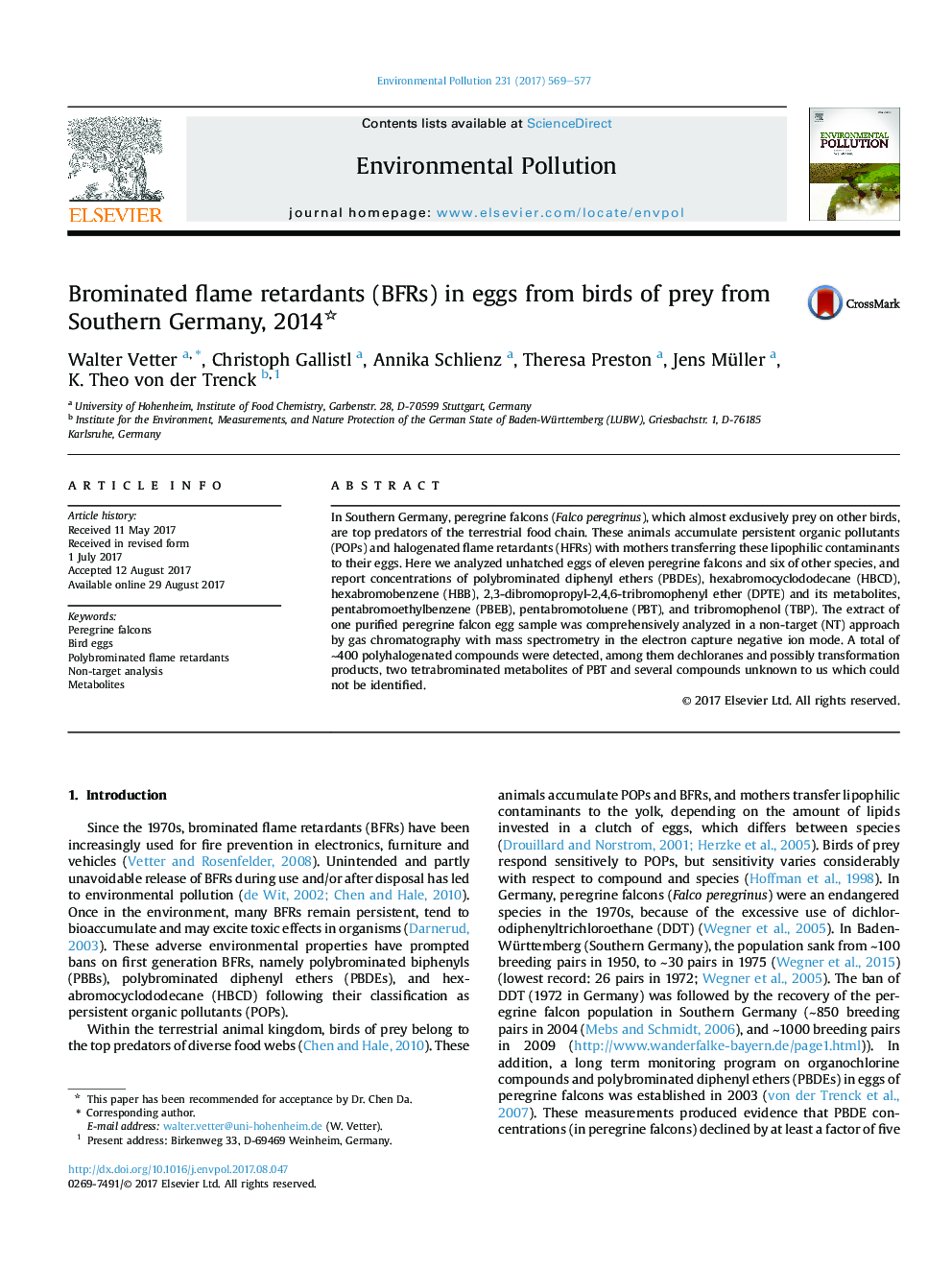| Article ID | Journal | Published Year | Pages | File Type |
|---|---|---|---|---|
| 5748595 | Environmental Pollution | 2017 | 9 Pages |
â¢BFRs were determined in eggs of 11 peregrine falcons and 6 other bird eggs.â¢PBDEs, HBCD, HBB, DPTE and metabolites, PBEB, PBT, TBP were quantified.â¢one sample was comprehensively analyzed in a non-target (NT) approach.â¢â¼400 polyhalogenated compounds were detected in this peregrine falcon egg.â¢dechloranes and metabolites, two PBT metabolites and unknowns were described.
In Southern Germany, peregrine falcons (Falco peregrinus), which almost exclusively prey on other birds, are top predators of the terrestrial food chain. These animals accumulate persistent organic pollutants (POPs) and halogenated flame retardants (HFRs) with mothers transferring these lipophilic contaminants to their eggs. Here we analyzed unhatched eggs of eleven peregrine falcons and six of other species, and report concentrations of polybrominated diphenyl ethers (PBDEs), hexabromocyclododecane (HBCD), hexabromobenzene (HBB), 2,3-dibromopropyl-2,4,6-tribromophenyl ether (DPTE) and its metabolites, pentabromoethylbenzene (PBEB), pentabromotoluene (PBT), and tribromophenol (TBP). The extract of one purified peregrine falcon egg sample was comprehensively analyzed in a non-target (NT) approach by gas chromatography with mass spectrometry in the electron capture negative ion mode. A total of â¼400 polyhalogenated compounds were detected, among them dechloranes and possibly transformation products, two tetrabrominated metabolites of PBT and several compounds unknown to us which could not be identified.
Graphical abstractDownload high-res image (249KB)Download full-size image
